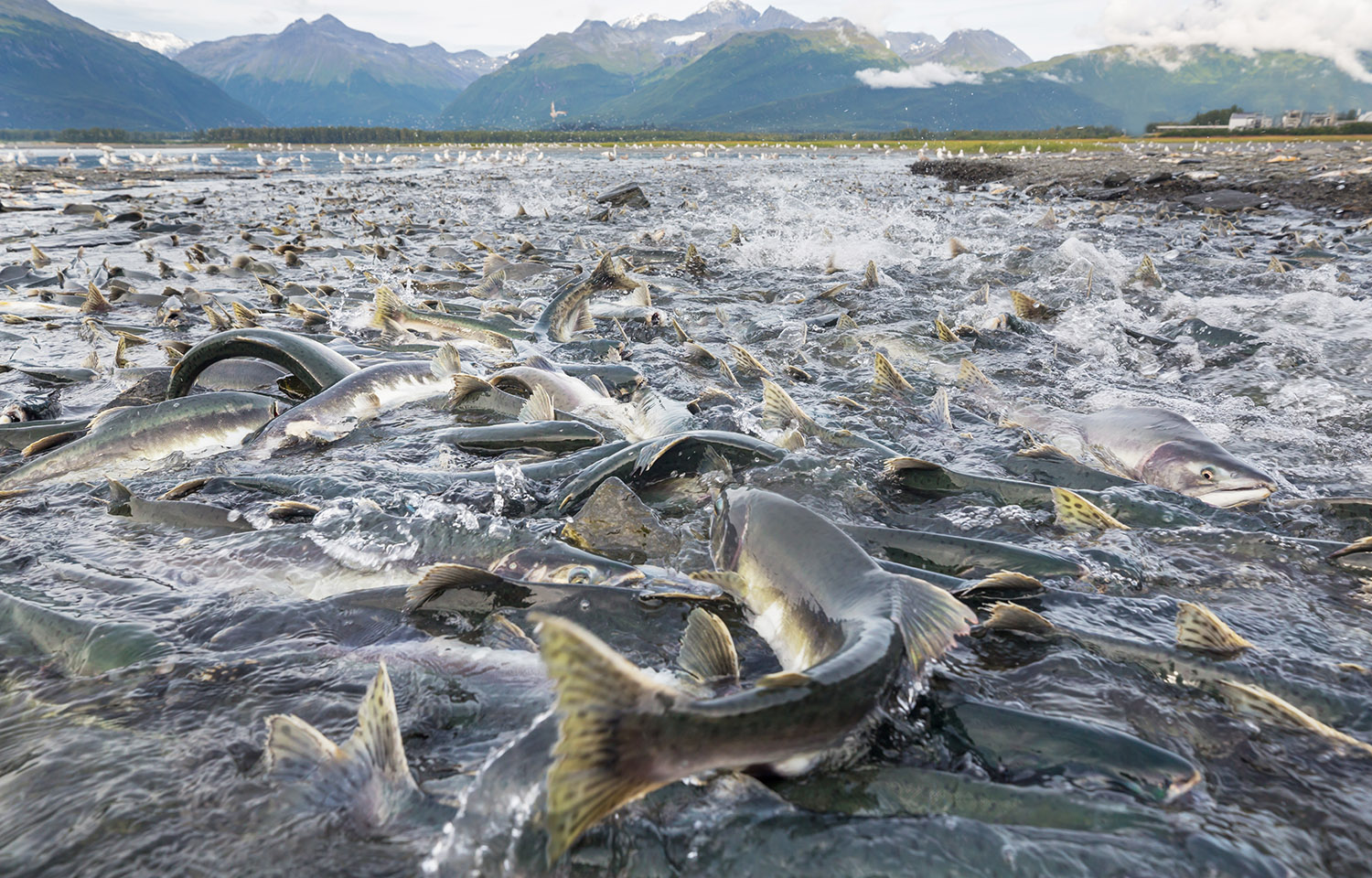The Alaska Salmon Research Task Force has released its final report recommending research priorities that will support salmon management in the state of Alaska.
“Pacific salmon are essential to the cultural and socioeconomic well-being of Alaska, supporting commercial, recreational, and subsistence fisheries and rural communities across the state,” Alaska Department of Fish and Game Commissioner Doug Vincent-Lang said. “I would like to commend the Task Force for identifying priority research to support sustainable salmon runs in Alaska.”
The report identifies factors that could impact salmon productivity and gaps in the scientific understanding of the Pacific salmon life cycle, according to NOAA Fisheries. Created under the Alaska Salmon Research Task Force Act, the task force includes representatives from governments, industry, researchers, and non-governmental organizations.
“The 19-member task force and its 44-member Arctic-Yukon-Kuskokwim Working Group did an impressive job compiling and integrating diverse information and data from scientists and Indigenous and Local Knowledge holders to inform development of this important science plan,” NOAA Fisheries Assistant Administrator Janet Coit said. “Thanks to their work, we have a meaningful strategy to better understand mechanisms driving Alaska salmon production to provide a path for mitigating negative impacts due to climate change and other factors.”
Potential impacts to salmon populations highlighted in the report include a warming climate and extreme events, salmon health and condition, marine food limitations, marine harvest and bycatch, predators, freshwater habitat changes, and freshwater harvest. The task force recommended applied research to improve stock identification methods, identify strategies to minimize human impacts on freshwater and coastal habitats, and make use of new technologies, among other suggestions.
“Across Alaska, there is a great deal of variability in salmon runs, particularly in recent years. However, the Task Force recognizes that declines in Chinook and chum salmon returns in Western Alaska are having a profound effect on the culture and food security in that region,” said Ed Farley, a fishery biologist and the NOAA Fisheries and Alaska Salmon Research Task Force Chair. “The time for action is now. We hope that the recommendations we have provided through this collaboration will lead to needed measures to ensure the long-term viability of Alaska salmon populations.”
NOAA Fisheries will work with the state of Alaska and other tribal and non-governmental partners to implement the task force’s recommendations.
Salmon fisheries have struggled along the state's west coast, facing substantial closures as regulators work to rebuild wild populations.
Alaska’s salmon industry faces uncertainty on multiple fronts. In addition to regulatory closures, the sector has been hit by low prices and low demand, the closure or sale of several major processing plants, and petitions for new Endangered Species Act protections. Experts are predicting a significantly lower Alaska salmon harvest in 2024.








